Continuing our trip in Africa…
After our time in Uganda, we took a few days to relax on the tropical island of Zanzibar! Read about our trip to Uganda here. See pictures from both parts of our trip here.
Zanzibar is actually an archipelago that is part of Tanzania but has semi-autonomous status. When most people think of Zanzibar, they think of the main island, Unguja. Located in the Indian Ocean, Zanzibar is predominantly Muslim and has long been a center of maritime trade and commerce. It is a major producer of cinnamon, nutmeg, black pepper, and cloves, which gives it its nickname of “Spice Island.” All of these things, coupled with its storied and rich history, make the cuisine of Zanzibar delicious, interesting, and spicy!
Like the rest of Tanzania, the official language of Zanzibar is Swahili. Learn a few words, the locals will love it! Jambo (Hello), Asante Sana (Thank you very much)!
Practical Considerations for Visiting Zanzibar
At the time of publication, US citizens require a tourist visa to visit Tanzania, including Zanzibar. Check current visa requirements for US citizens here. You will need proof of yellow fever vaccination if you are traveling from an area where the disease is endemic. According to the US Department of State website, some immigration ports require proof of the vaccine for everyone entering the country, so check the current requirements before you leave.
Be sure other vaccines are up to date. You will need malaria prophylaxis for travel to Tanzania. Check out the CDC’s recommendations for vaccines and other health-related considerations here.
The local currency is the Tanzanian Shillings (TZS). We usually don’t exchange money, instead taking cash out from the ATM. Some charge fees, so be cognizant of that. I try to visit as few times as possible since most have flat fees rather than charging percentages. USAA refunds the fees, and other banks may do this too. While some merchants accept credit cards, it is always best to have cash in more remote parts of the world. If you do use cards, have the merchant charge you in local currency to obtain the best exchange fees. Notify your credit card company of travel plans ahead of time to avoid having a fraud alert placed on your cards and having a transaction declined. And, if you must exchange money, go to a reputable bank or exchange counter rather than using a guy on the streets.
Cultural Notes for Zanzibar
Zanzibar is predominantly Muslim and pretty conservative. It is essential for tourists to respect the culture and traditions of any area they visit. For Zanzibar, it is HOT. I recommend flowing maxi dresses with either cap sleeves or a light wrap to cover your naughty bits. AND by naughty bits, I mean your shoulders and knees! Light colors and breathable fabrics are key, and linen shawls or scarves are great for covering yourself while keeping cool.
Covering up not only maintains modesty, but it helps you avoid the intense rays of the sun. In addition, black and blue are not recommended, as they attract tsetse flies, notorious vectors for Trypanosoma brucei, the causative organism for African Sleeping Sickness. As an aside, you often see small black and blue flags in Tanzania, which are meant to attract these pests. The flags are “scented” with cow urine to help attract the flies, and impregnated with insecticide to kill them.
BE CAREFUL when taking photographs. If you want to photograph a person, think you might inadvertently capture a person, or even LOOK like you are photographing someone – ASK! I was taking a pic of a building and this guy started yelling at me because he thought I was photographing him. Rookie mistake, a big faux pas. Learn from my error!
As anywhere, beware of pickpockets, particularly in town. Just be smart… don’t wear expensive jewelry, carry a nice, small crossbody bag that you can keep your hand on at all times, or wear a small backpack on your front, and maintain situational awareness. Don’t be paranoid, just be aware.
Arrival
Our Priority Pass membership really came in handy for this part of the trip! We hung out at the priority pass lounge in Entebbe, Uganda before departure, then the Turkish Airways lounge on our layover in Nairobi. When we arrived in Zanzibar, Vuong noticed someone holding a “Priority Pass” sign. We approached him and he escorted us to a private arrival lounge where we relaxed with some iced tea as we obtained our visas. He even brought us our luggage! What a nice introduction to Zanzibar.
Stone Town, Zanzibar
We decided to make Stone Town our base of operations. Located on the main island of Unguja, Stone Town is the historic center and government seat of Zanzibar City and is a UNESCO World Heritage Site. Many of the buildings are made of coral, and covered in white plaster. Zanzibar went through a period of economic hardship, during which much of the city deteriorated. While it is being restored, many of the buildings have streaks of black mold. Narrow alleyways wind between the buildings and make it very easy to get lost. The best way to explore Stone Town is on foot, although scooters are plentiful and there are cars as well.
We loved Stone Town, and Zanzibar as a whole. The labyrinth of alleyways made it easy to get lost, and there was an endless array of shops and cafes. Stone Town is famous for its doors. Massive and carved of wood, they are decorated with brass studs that were originally used in India to defend against war elephants ramming them down. Check out some photos of cool doors here.
Outside of Stone Town, paved and dirt roads grant access to villages and beaches around the island. The island is known for its white sand beaches and the warm, clear Indian Ocean. Check out Tripadvisor’s top picks for beaches on Zanzibar here. This island is great for a relaxing beach getaway and has numerous beachfront resorts where you can laze the day away. Water sports are plentiful, and you can dive, snorkel, paddle board, fish, rent jet skis- whatever your heart desires.
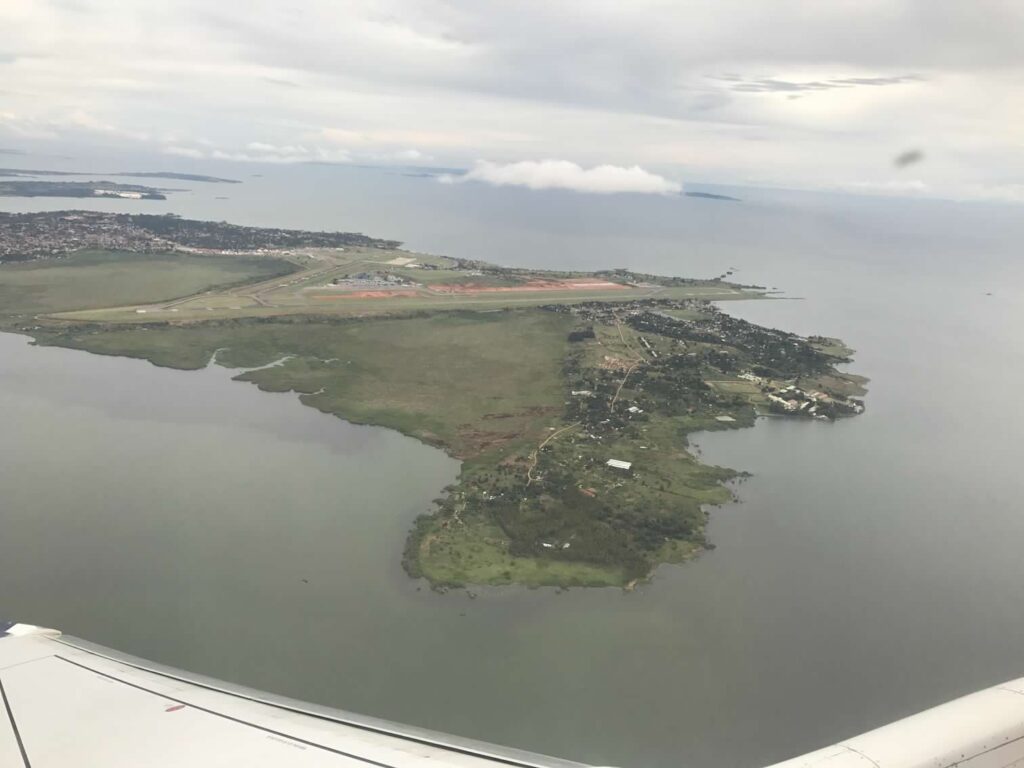
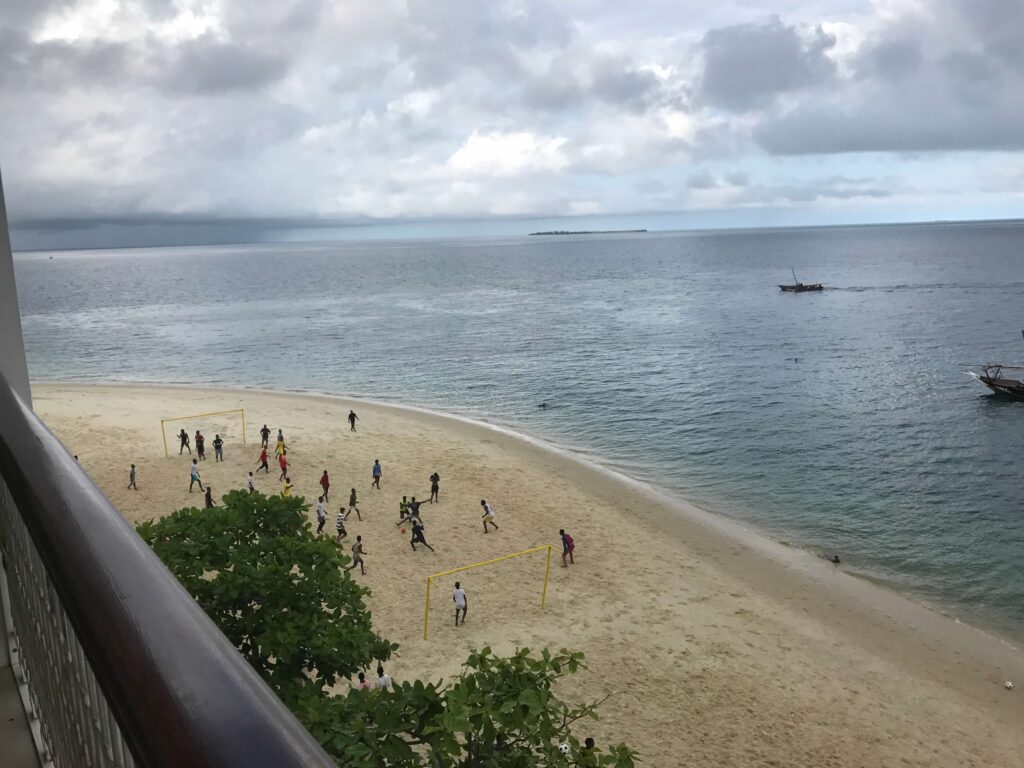

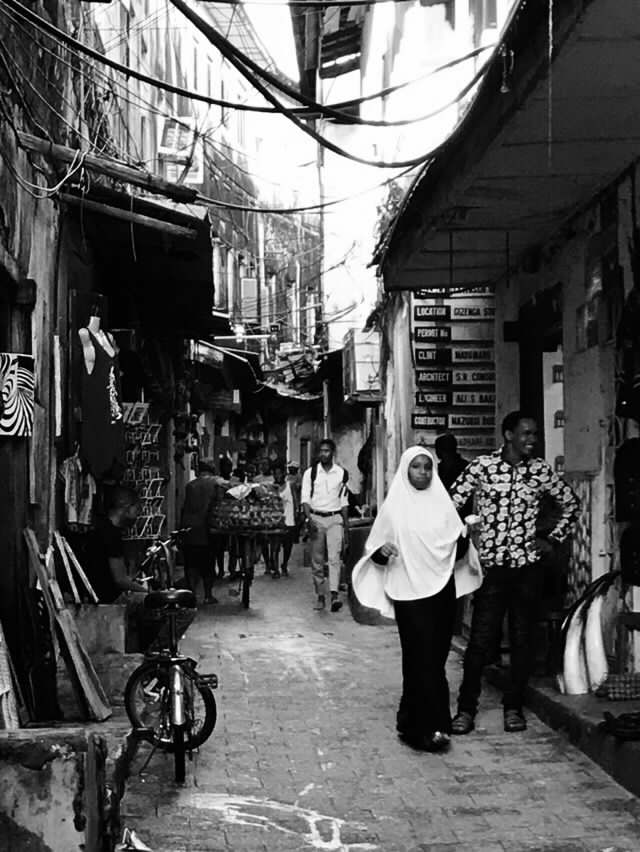
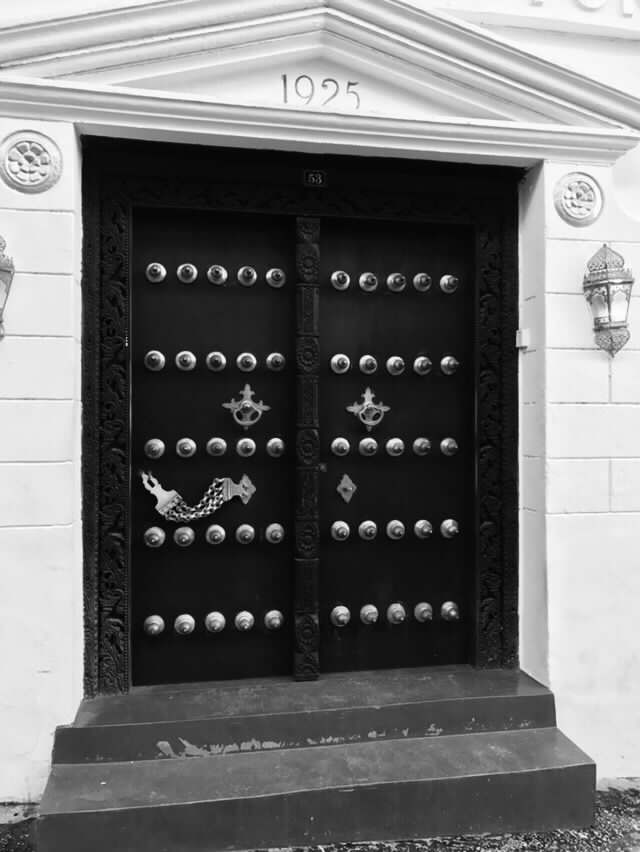

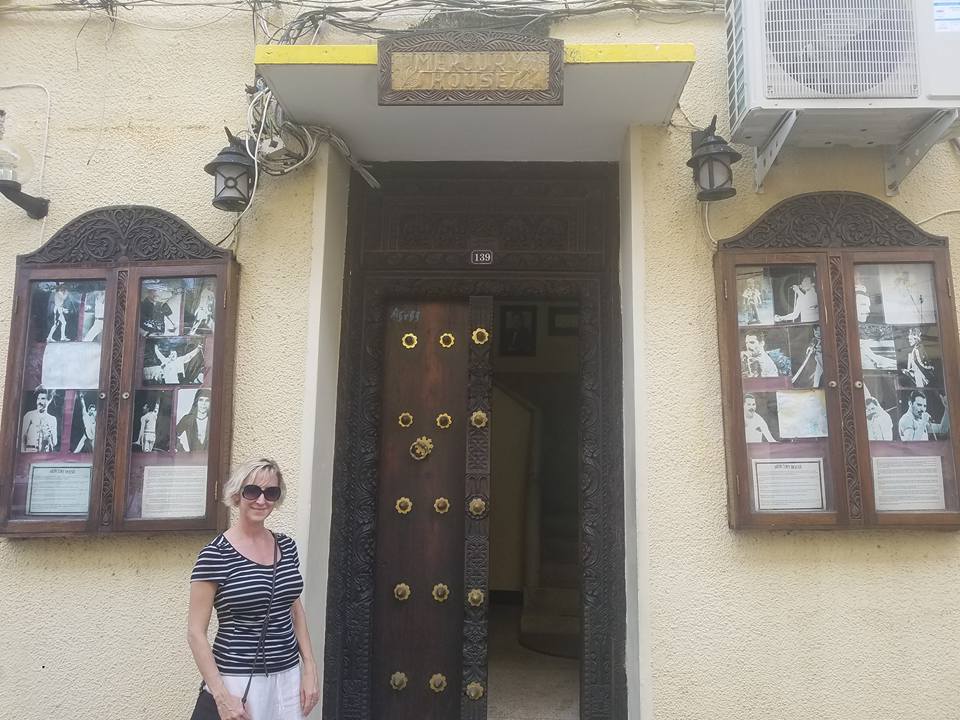
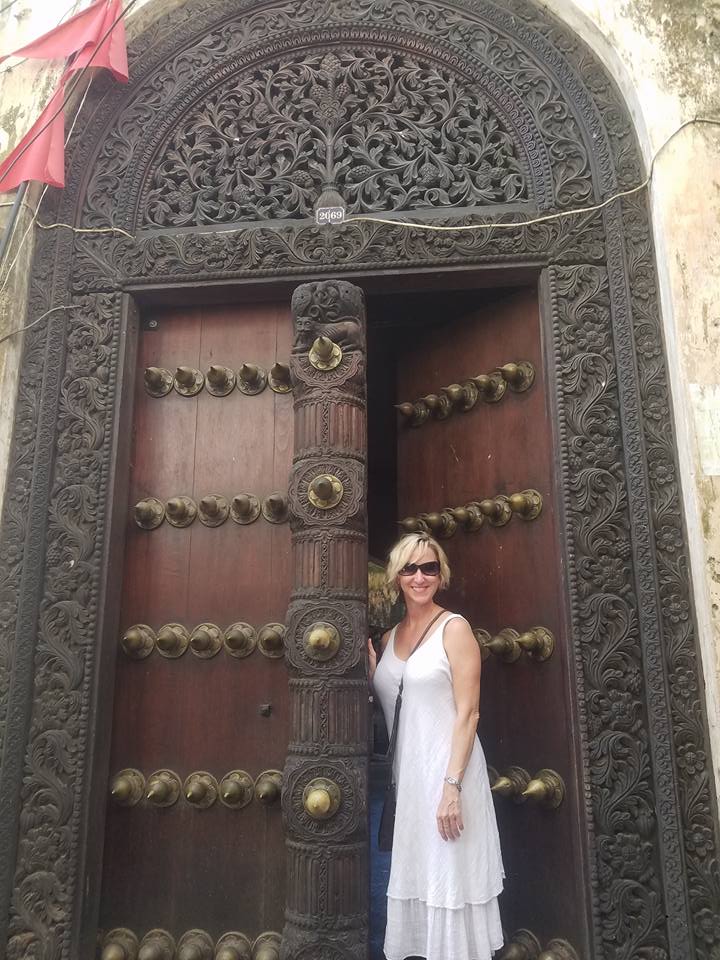
Park Hyatt Zanzibar
We scored an oceanfront suite at the Park Hyatt Zanzibar! As an aside, the World of Hyatt loyalty program consistently rates as the best loyalty program of any hotel brand. While Hyatt hotels are not as plentiful as Marriotts and Hiltons, they tend to be located in popular tourist destinations around the world, and rooms cost a lot less points. It is easy to earn free nights and achieve status, even just using their credit card. You can book a room at the Park Hyatt Zanzibar for only 20,000 World of Hyatt points, and a suite for 35,000! We just booked one night in a suite in Athens on the Plaka for 20,000 points, and two nights in a suite at the Grand Hyatt in Istanbul for 20K a night.
The center of the Park Hyatt Zanzibar is its beautiful lobby, with multiple skylights to let in the sun. Its periphery is surrounded by the pointed arches so often seen in Islamic architecture, and a fountain sits at its center, under several ornate hanging lanterns. Everything is sparkling and white, and the Indian Ocean is visible across the expansive veranda that lines the back of the hotel and contains an infinity pool.
Our room consisted of a living room, a bedroom with a king-sized bed and seating area, and a massive bathroom. The living room and bedroom had large French doors which opened up to a huge balcony with stunning views of the ocean. Gauzy mosquito netting surrounded the bed, and gaze curtains covered the French doors.
Restaurants in Stone Town
We were craving spicy, flavorful food after our time in Uganda! We were not disappointed with Zanzibar. The food we had had a strong Indian influence, with Arabic, Asian, and African flavors.
The Post Taperia
Our flight arrived late at night, and we were starving! We set off in search of food but none was to be found! We enjoyed exploring the deserted streets at night. The absence of people and yellowish streetlights made for a romantic atmosphere. We noticed a crowd of people at a second-floor establishment, so we went in, hoping for some food. The Post Taperia was packed and had a live band. We sat at the bar to find that the kitchen was closed… the owner was kind enough to bring us a cheese plate, which was just fine with me!
Emerson Spice and Emerson Tea House
We had so many wonderful meals in Zanzibar, and each place had a unique atmosphere. Emerson Spice was one of my favorites.
Emerson Spice consists of two hotels and three restaurants. The hotel lobby was funky and eclectic, and this would have been a great place to stay. We ducked in out of the rain for lunch at the Secret Garden and were seated in a cozy cubby just off of the central garden. We watched and listened to the soothing rain as we savored our seafood curry and shrimp wrapped in crunchy noodles. The food and service were spot-on!
We had dinner at the Rooftop Tea House on our last night in Zanzibar. This is an absolute must-do! Waiters in traditional attire served a multi-course feast of authentic Zanzibar cuisine, accompanied by traditional dancers. We sat on cushions arranged around the perimeter of the room and watched the sunset over Stone Town. We met several interesting people whom we keep in touch with today, 7 years later! The service, food, and conversation were unforgettable. The connections you make and the friends you meet are some of the best parts of travel, and this restaurant facilitates these sorts of experiences.

Beyt al Salaam
We had a delicious lunch at Beyt al Salaam, which is also a 10-room boutique hotel in an excellent, central location in Stone Town. The restaurant boasts Swahili dishes, as well as Chinese and other Asian selections. The highlight of this meal, and one of the best dishes we had on the entire trip, was coconut crab soup. So nice, we had it twice! We circled back for lunch on our last day on the island. We also had Thai fish cakes and an avocado mango salad served in a martini glass. The dining room was quaint and intimate, the service excellent, and the food delectable.
The Silk Route
One night for dinner, we had Indian food at an Indian Fine Dining restaurant called The Silk Route. Aside from the cheesy guy in costume at the base of the stairs, this was another amazing culinary experience! We had beef vindaloo and butter chicken as we looked out the window and watched rats jump from roof to roof like spidermen.
Lukmaan Restaurant
A local hotspot and favorite among repeat tourists, Lukmaan Restaurant had a large outdoor seating area centered around an ancient baobab tree. This was a cool place with great energy and decent food- we had curry fish, biryani, and an avocado shake.
Activities in Stone Town
Night Market
After the sun goes down, Forodhani Gardens by the water comes alive! Vendors in white chef’s hats offer spreads of neatly arranged fresh seafood. Pick your favorites and have them skewered and grilled fresh. You can have a tropical fruit salad made to order, with unique offerings such as custard apples and jackfruit. The highlight, however, was Zanzibar pizza! The chef grills a Chapati bread, then adorns it with toppings of your choice. We had ground beef, egg, cream cheese, mayo, and some veggies. The whole concoction is covered with another chapati bread to make a huge, delicious pocket of goodness!
For dessert, grab some coconut bread or a crepe with sugarcane juice or a Zanzibar spiced coffee. The night market cannot be missed! The food and the hustle and bustle are an essential part of life here on the island.
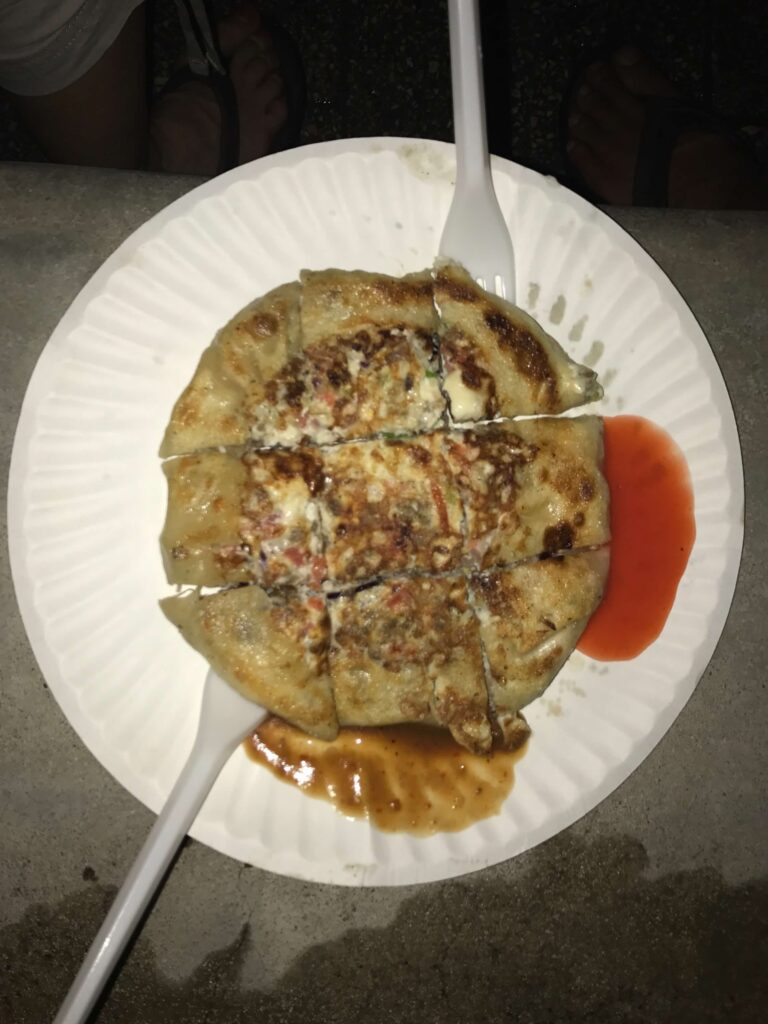

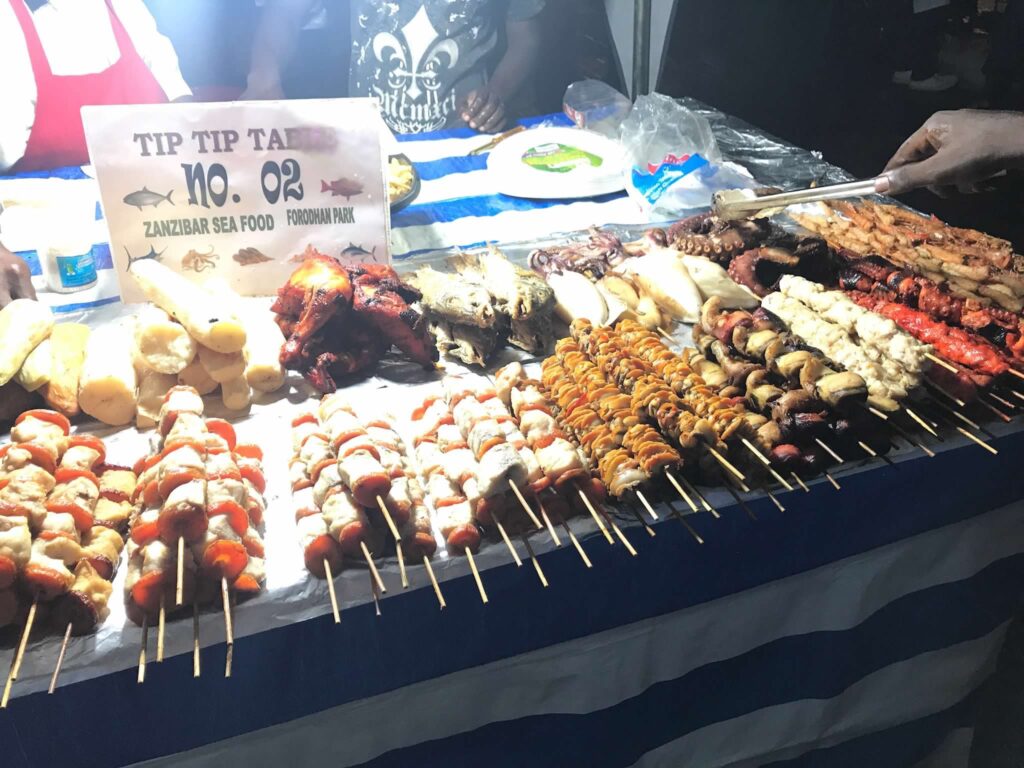
Freddie Mercury House
One of Zanzibar’s most famous sons is Queen frontman Freddie Mercury. Born Farrokh Bulsara to a hardworking Zoroastrian family, he was raised here and, like many restless youths, was anxious to get out and take on the world. Learn about his life and history at the Freddie Mercury Museum, a museum located in the house where he and his family lived until they moved to England in 1963.
Historic Zanzibar
Book a tour on your first day through Toursbylocals or Viator. You can combine a day tour of Stone Town with an excursion to a spice farm or beach, or just take it easy and discover the city. Important historic sites in town include the Sultan’s Palace Museum, the Old Fort, and the Slave Market. Not only was Zanzibar a center for the spice trade, but it was also a hub for the slave trade. Steel yourself if you plan to visit the slave market, as you can see an actual whipping post and shackles and chains that were used to restrain these people.
Spice Market
The Darajani Market is a must-see. Part of the market has stalls of spices, herbs, crafts, and home goods. This part of the market is atmospheric and fragrant. The other part, the “wet market,” is pungent and overwhelming, with slabs of meat and fish for sale, dried squid, and cage after cage of live chickens available for purchase. This is real life in Zanzibar, and I think you should experience it!
We had a tour guide… Every morning during our stay, we would take our coffee out to our balcony and watch fishermen work their catch. Every day, a very friendly man would call and wave up to us, offering to take us out in his boat. His boat looked a little questionable and none too seaworthy, but on the last day, we decided to ask him for a city tour. Sayed took us through the market and led us around some back alleys to share his way of life with us. It turned out to be a fun experience.

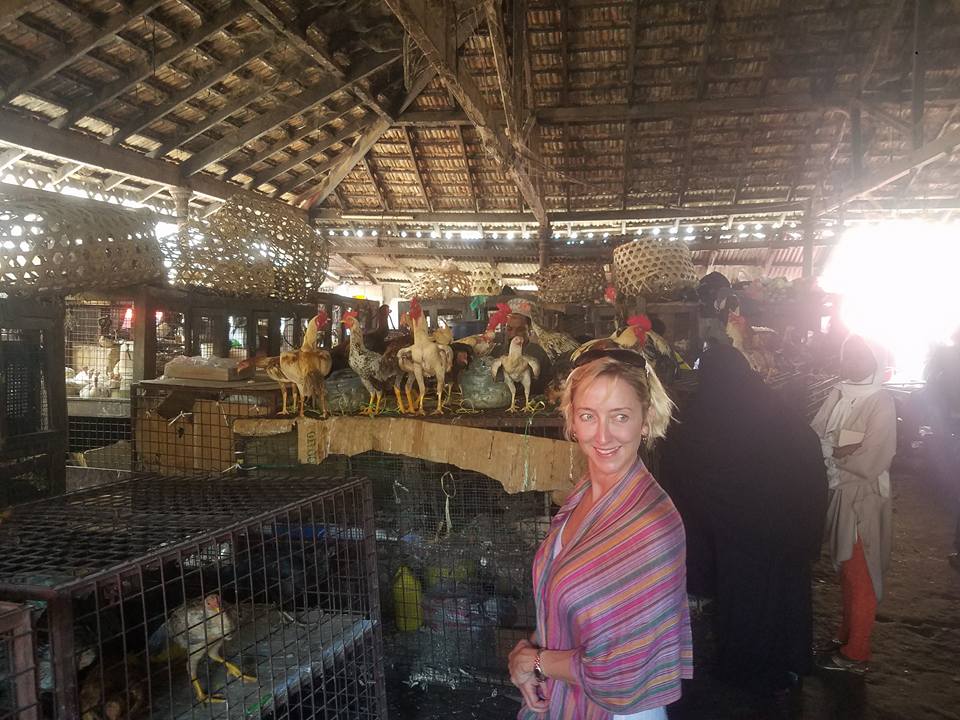

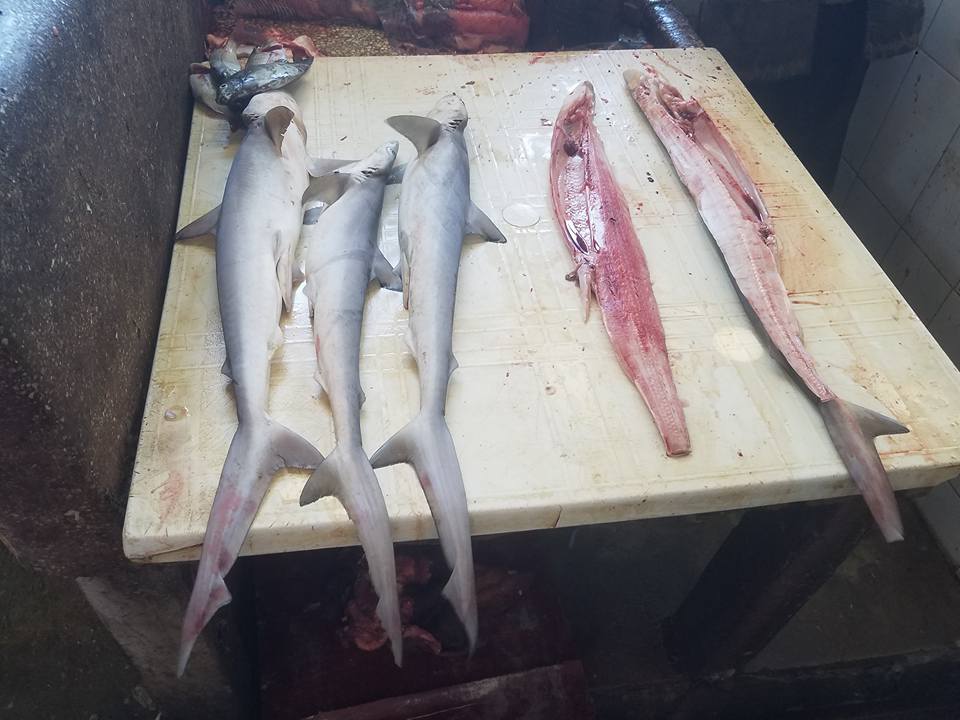
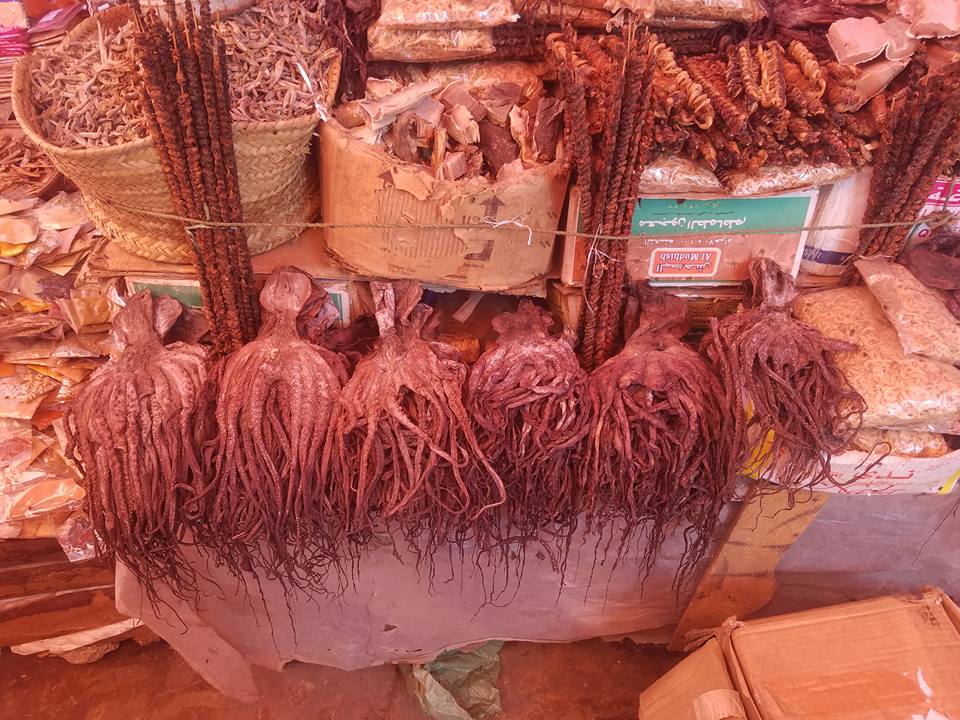
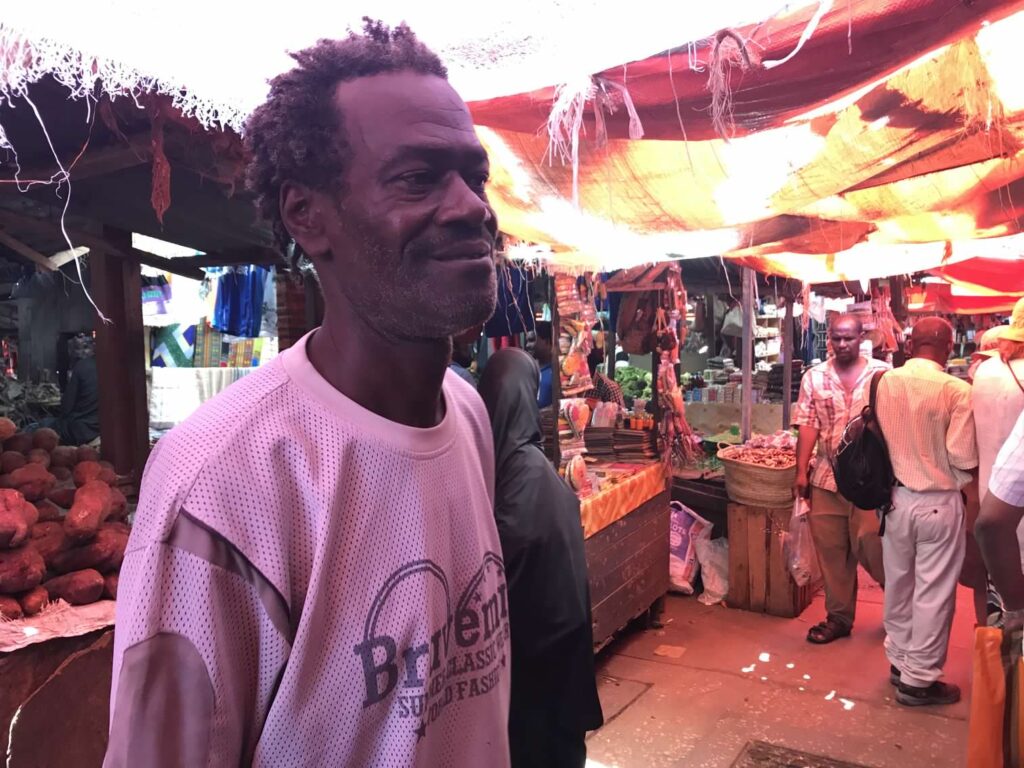
Scooter Explorations in Zanzibar
We usually plan lots of activities, but we had not planned anything for this portion of our trip. We found a tour outfitter in downtown Stone Town called Zanzibar Extreme Water Sports, where we rented a scooter and booked two excursions.
I always resist when Vuong suggests renting a scooter, and it always turns out to be a trip highlight. This time was no different. He is a competent, confident driver and makes me feel at ease, but the anticipation always makes me anxious. Having a scooter frees us up to explore on our own, at our leisure, and gets us in the thick of it. So, we picked up our scooter and set off to explore the island.
We immediately joined hordes of scooters and bicycles making our way out of town. After having a permit check and getting gas, we got out into the countryside. With our army-style helmets, we could still smell the fresh air and feel the wind on our faces. We passed through countless villages where we were bombarded by smells- good and bad- ranging from cooked meat and spices to body odor and poo. Most of the women we encountered wore traditional Arabic clothing – most wore colorful flowing fabric and head coverings, or hijabs, but some wore abayas or niqabs, which are full black garments worn over street clothes, sometimes even covering the eyes. Most we saw, however, had their eyes uncovered. In any case, they were all so beautiful and mysterious.
Points of Interest
We enjoyed driving around, randomly exploring side streets, and following signs to attractions we saw. We passed by Cheetah’s Rock, but you need reservations to visit. According to the website, they are ethical and committed to conservation. If you want to visit, do a little research first to be sure. This goes for any wildlife attractions. Often, in Africa and Asia, the animals are not treated ethically and are sometimes abused, starved, or taken from their homes for exploitative purposes. As a rule, forced interactions with animals are bad.
We happened upon a quaint resort and had lunch there. Zanzi Resort looks like an amazing place to stay, and the food was delicious. The setting was off the charts. We had tuna tartare and duck egg rolls in their open-air restaurant, and hopped on an inflatable rubber ducky in the pool to cool off, before walking through the gardens down to a gorgeous beach. We saw their “Ocean Access Villa” which looked incredibly romantic.
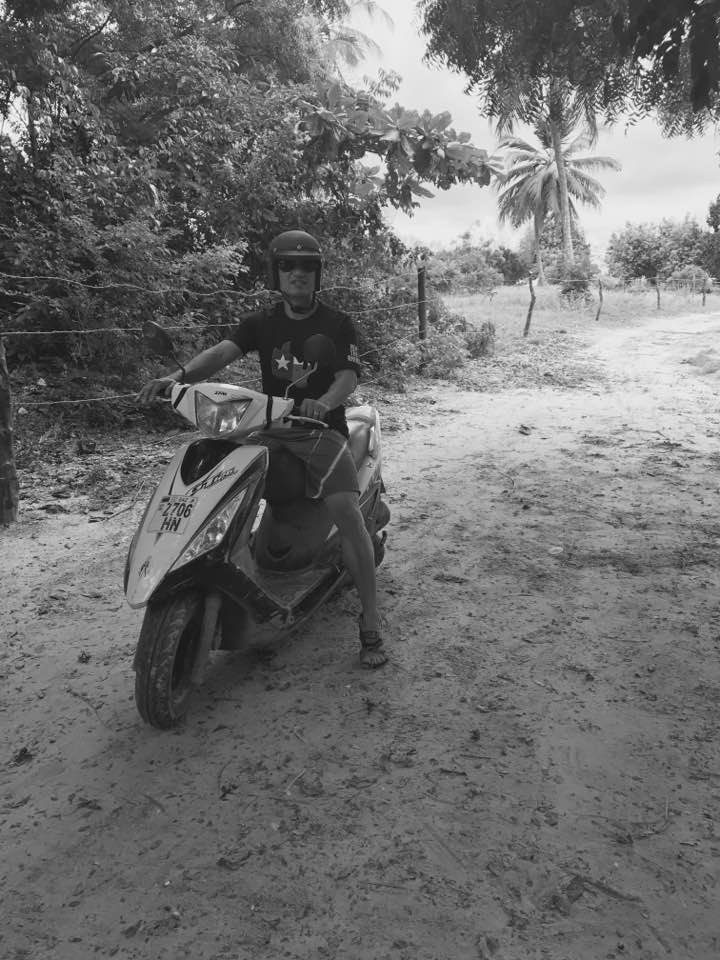

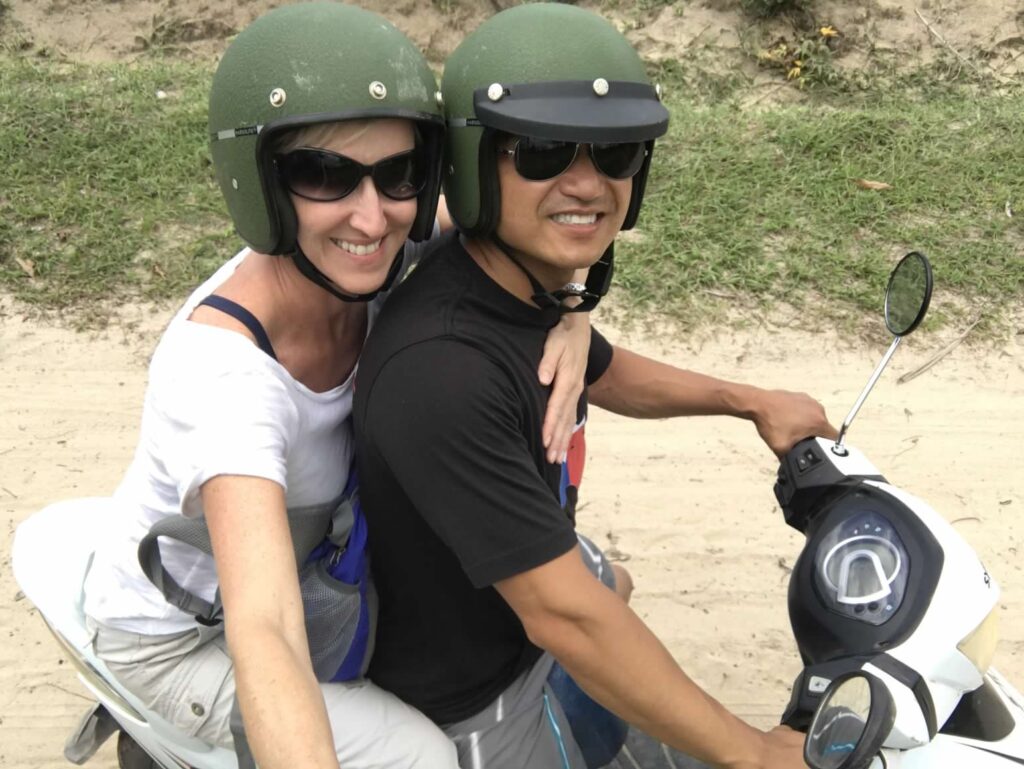
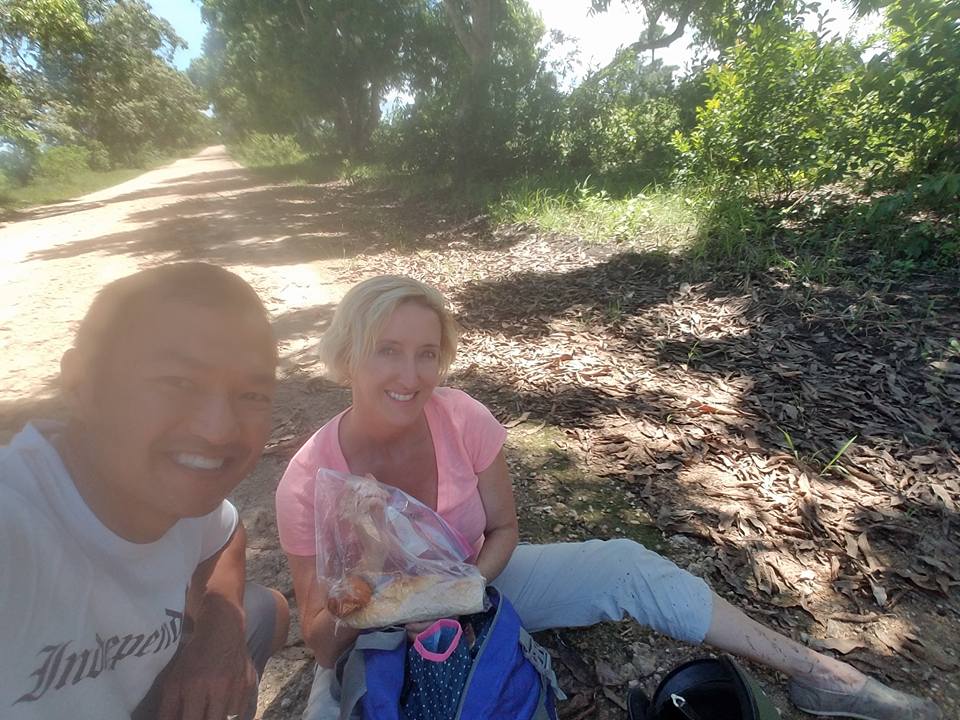
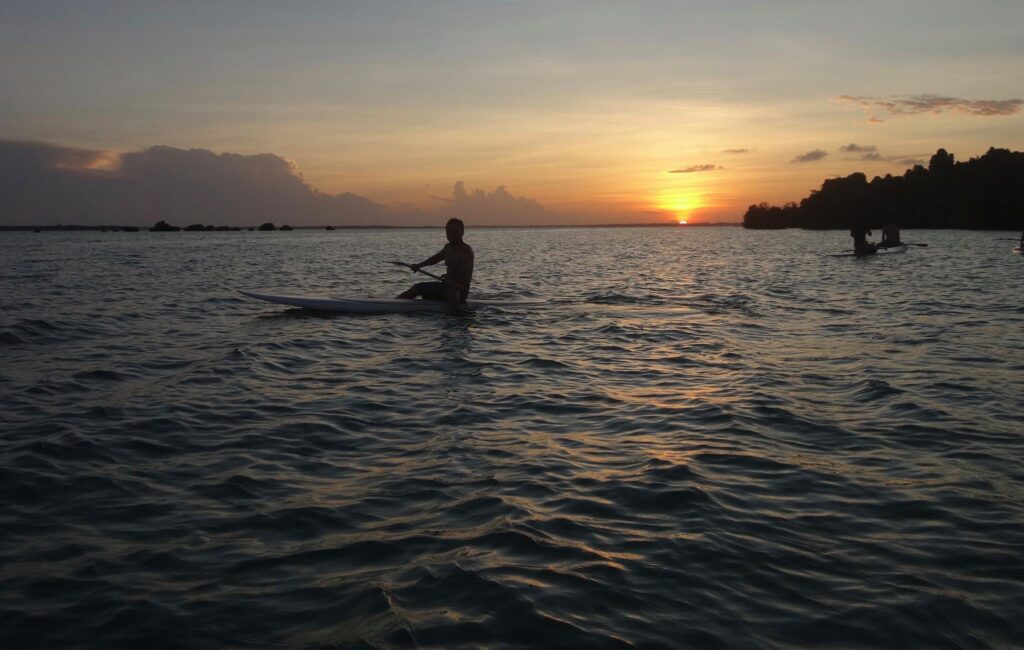
Sunset Stand-Up Paddleboarding
Extreme Water Sports arranged this excursion for us, including transportation from our hotel in Stone Town. Our driver picked us up around 2:45 pm and we drove past Jozani Chwaka Bay National Park, which has lots of monkeys and birds, and the Butterfly Center, both worth a visit if you have the time!
We hit Paje, Zanzibar, which is a cool place to stay, packed with hostels, hotels, restaurants, and water sports, not to mention a fabulous beach.
Not too far past Paje, we turned off onto a pothole-ridden dirt road and drove through the forest. We stopped at a clearing in the woods and started walking. We actually had to swim across a channel to get to the tourism office, where our stand-up paddleboards were waiting.
Stand-up paddleboarding is not difficult. I recommend taking a lesson your first time, but after that, I don’t think it is necessary. We paddled through progressively narrower channels through the mangroves, eventually making our way into the open ocean where we sat on our boards and watched the sunset. The water was warm and clear and the scenery surreal.
Jet Ski Snorkel
We booked this excursion through Extreme Water Sports, but it did not include transportation. So, we set off on our scooters to explore and, eventually, find the beach from which we were to leave.
The Journey
We passed through Mahonda and Kinyasini, down dirt and paved roads, through forests and past plains. We saw scattered baobab trees, and the locals were very friendly, shouting “Jambo!” and waving at us. One long road through the fields had a huge mudhole that we had to carry our scooter over! After a picnic lunch of bread, cheese, and fruit under an acacia tree, we continued on.
We rounded a corner and, entering a mango grove, saw a breathtaking view of the ocean. So, we stopped for a photo. A group of uniformed schoolchildren swarmed us and began pulling at my clothes and backpack. I was afraid! I had to jerk my pack out of their hands as we screamed and Vuong hit the gas, leaving them in the dust! No one was hurt, but the “Children of the Mangoes” gave us a fright!
The Excursion
We arrived at Muyuni Beach early, so we had lunch at a beachside cafe. We watched men in traditional Masaai apparel walk down one of the widest, whitest sand beaches I had ever seen. The tide was waaaaay out, and local women harvested seaweed in the shallows. We waded through bath-temperature tidal pools and observed the beautiful stripes of white, blue, and green formed by sandbars, rivulets of seawater, and seaweed. This is a tranquil, picturesque place to stay if you are interested in solitary relaxation. If you are going to Zanzibar for a beach vacation, check out this list of the top beaches on the island. Nongwe is supposed to be the best!
Around 4:00 pm, we boarded our jet ski and set off speeding across the waves toward our snorkel spot near Mnemba Island. We jumped waves, turning left and right, salt water splashing in our faces, with me laughing like a demented child! I felt so free and wild! It was just amazing.
A Nice Surprise!
We stopped, and our guides tied our jet skis together, allowing us to hop off and snorkel. The water was rougher than what I prefer for snorkeling, but we saw lots of cool fish, including what looked like a black lionfish. Then… we found ourselves swimming with a pod of about 10 dolphins! As I have said before, I prefer not to do forced wildlife encounters. I have done one or two in the past. Then, after doing some research, I felt terribly guilty and made a promise to myself to avoid such activities. It would follow that I do not do “swimming with dolphin” excursions. But, these dolphins chose to swim with us! It was magical. I never realized how fast these guys move!
Mnemba Island is a privately owned island with a surrounding restricted zone of 200 meters. An extensive coral reef surrounds the island and is home to many interesting wildlife species, including whale sharks, green sea turtles, 3 species of dolphin, whales, and 600+ species of fish. You can stay here for the bargain price of $1500…it looks pretty amazing. Check out andBeyond for details.
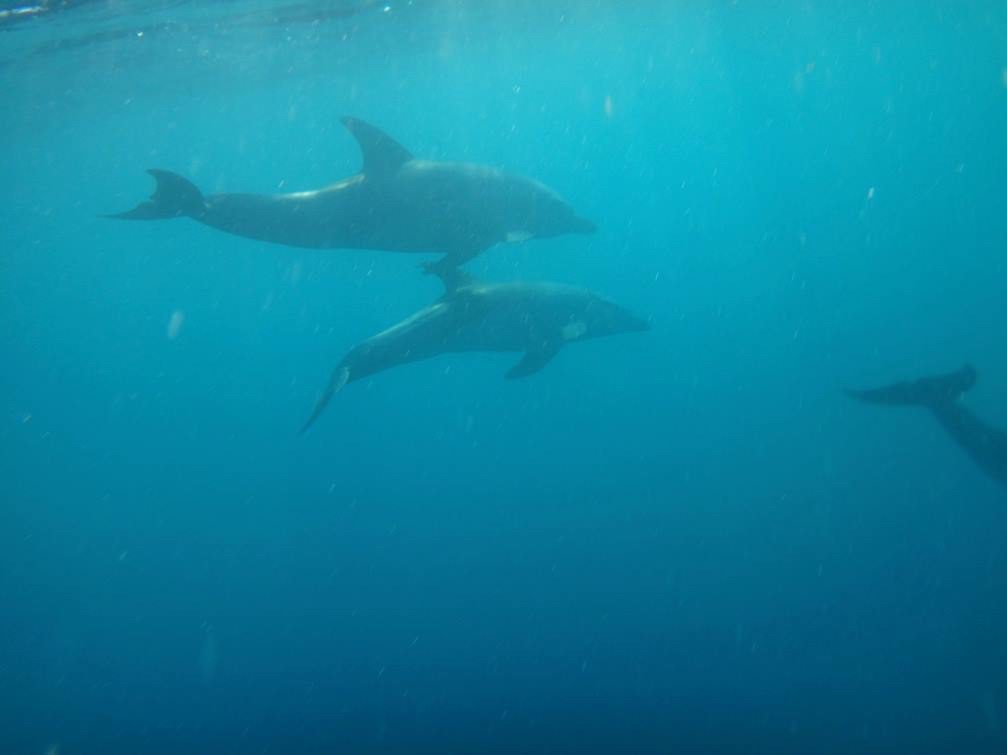
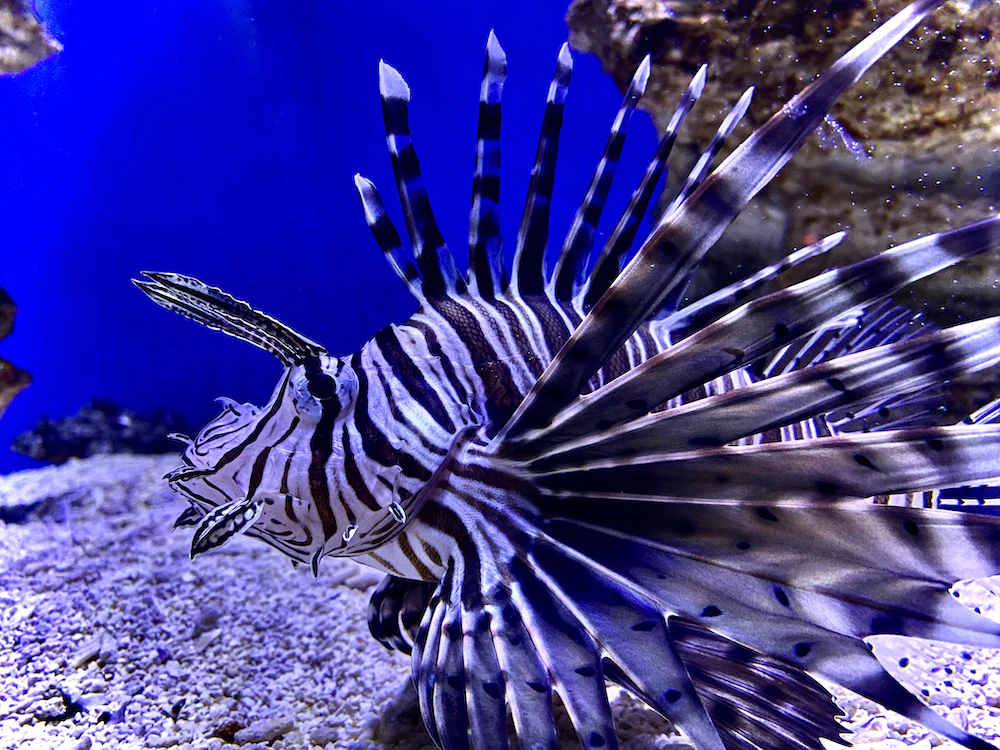
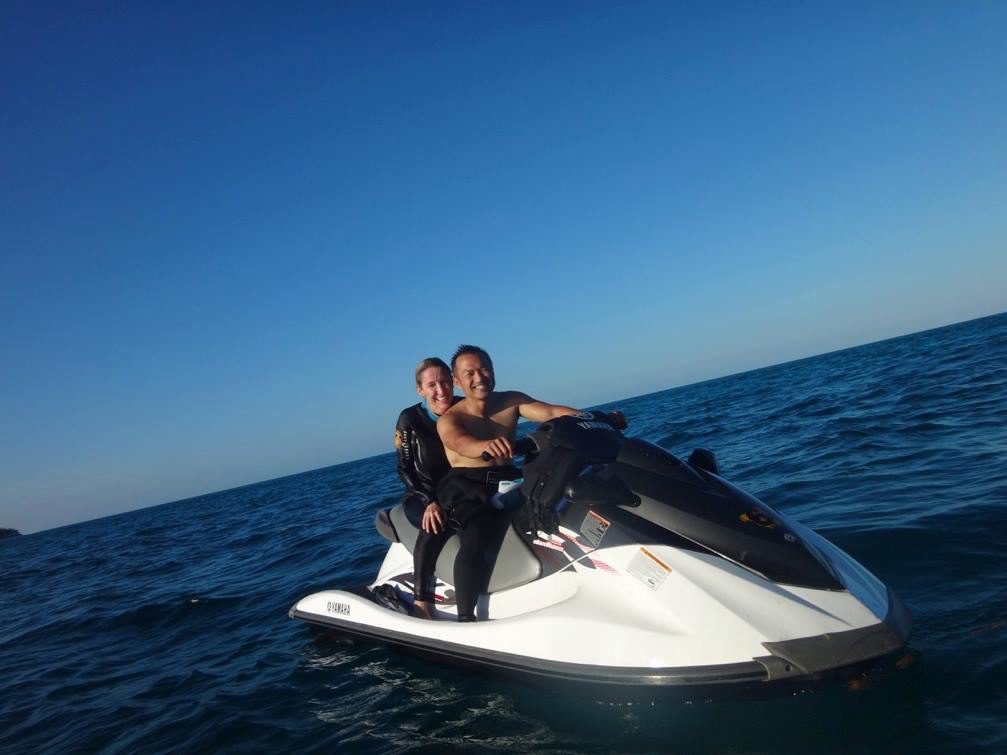
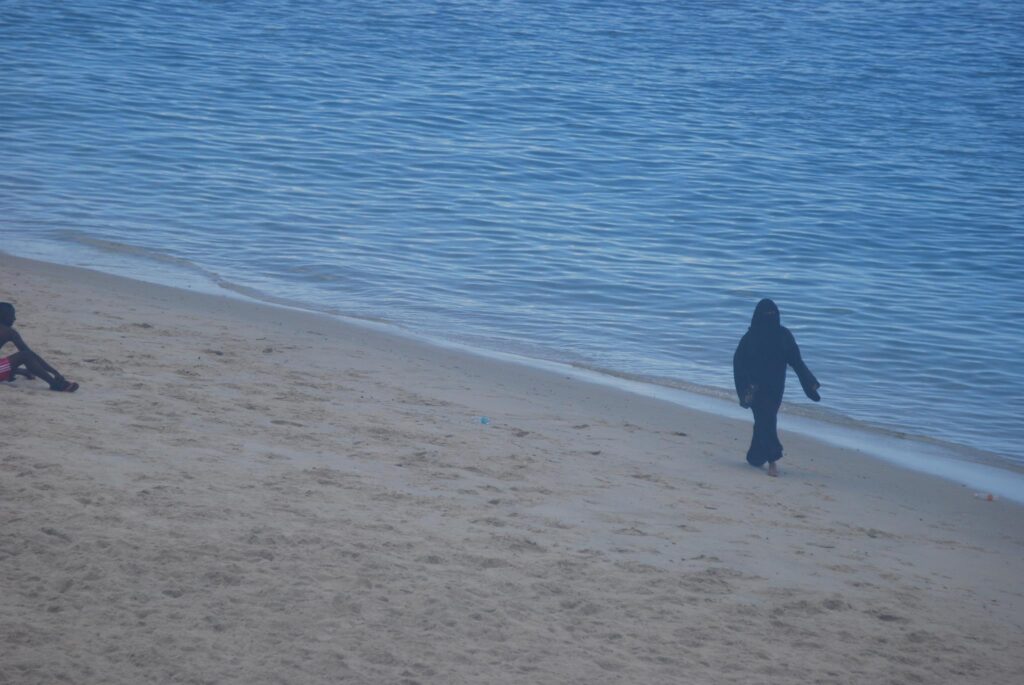

Heading Home
The drive home was an adventure on its own. It was already getting dark when we left, and street lights really are not a thing in rural Zanzibar. We wanted to get back in a reasonably quick manner, but we had to keep stopping to clear our eyes of bugs! It was. so. dark. The stars were thick and brilliant, but the night was opaque and pitch-black.
The last few minutes of the drive were hair-raising for me, and Vuong must have nerves of steel. Traffic was chaos! It often felt like we were driving into the headlights of oncoming traffic. At one point, while we were sitting in traffic, a car actually brushed my leg!
You don’t have to rent a scooter to get around Zanzibar. You could rent a car, hire a driver or, if you are adventurous, take public transportation. Book taxis or shuttles here. While there are no public buses, there are privately owned minibuses called “Dala dalas.” They do not run on a schedule, instead they leave when they are full. They are slow, make frequent stops, and can be crowded. Watch your things and be sure to negotiate a locals price.
Overall Impressions
Zanzibar is one of my favorite places on earth. We could have easily spent a week or two here. It takes a while to get there from the US. You can fly directly from JFK to Dar es Salaam in Tanzania, then take a ferry to Zanzibar. The ferry could be a fun experience, but we flew directly to the island. There are countless routes that take you through Nairobi or Dar and fly into Zanzibar. If you are looking for the best way to book travel on points, try points.me. I recently discovered this website through a Facebook group, and it is fantastic for finding seats at the lowest points cost possible.
When we go back, I would like to spend more time on and near the beach, trying more water sports. Maybe we will learn to kitesurf or get our scuba certification. Both can be done on the island. Perhaps a surf camp? Deep sea fishing? I’d like to visit a spice farm, Prison Island, and possibly Cheetah Rock. Maybe we will combine a few days in Zanzi with a visit to Madagascar or Mozambique. I still have a few countries in Africa that I want to visit, and some I want to revisit (looking at you, Uganda).
Have you been to Zanzibar? Are you planning on going? Comment below!


Very cool! So interesting!